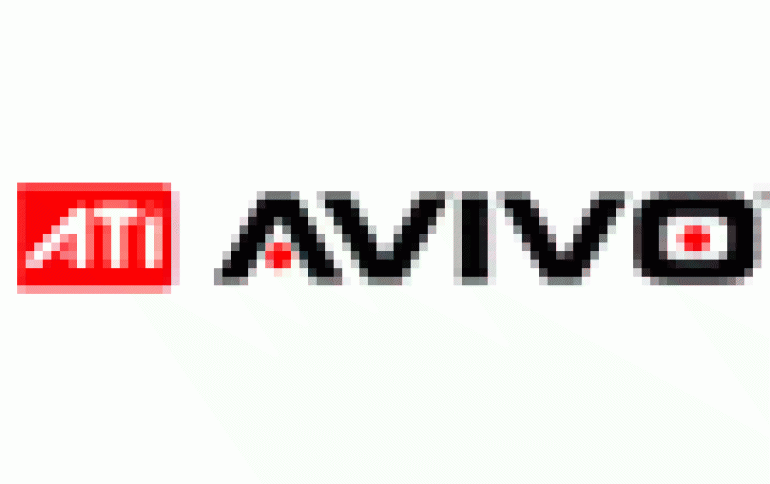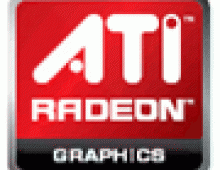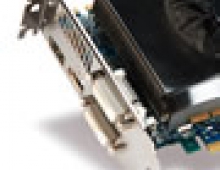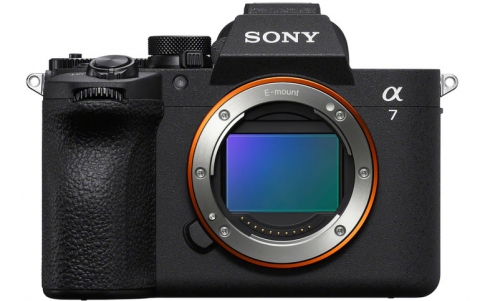
ATI Introduces Avivo Hardware And Software Technology
ATI introduced the Avivo concept; a new platform that includes the company's next generation hardware and software technologies related to video capturing, processing, reproduction and display on the PC monitor. Avivo will be an integral component in all of ATI's upcoming desktop, mobile, chipset, workstation, and software products.
The Avivo PC refines video capture and playback, takes advantage of the latest technologies to improve display quality, brings the high-definition content closer to the PC and of course, maintains the secure reproduction of the next-generation HD video on the PC platform.
According to the Canadian company, computers with Avivo provide much more accurate color reproduction than other PCs - they can display 64 times as many colors - and so are essential for anyone editing photos or viewing video. In addition, Avivo makes PC games look stunning on any current display and the superb image quality gives Avivo users the gaming edge.
According to the Avivo concept all digital content (photo and video files) is processed through a series of steps before being displayed on PC monitors. These steps are the Capturing, the Encoding, the Decoding, the Processing and finally, the Display. Note that currently, a full Avivo implementation in your system would have to comprise a Theater 550 PRO-based capture card and a Radeon R5-series based display adapter.
Capturing and Encoding
In the specific example, video capturing and encoding is done by the Theater 550 card.
ATI uses ADCs with 12-bit precision to get the analogue signal converted into a digital form. The signal is then passed into 3D comb the filtering hardware, in order to remove high frequency artifacts and other visual problems.
The next step is the hardware encoding. The available formats here are the MPEG-2/4, H.264, WMV9, VC-1, PMC, and DivX. Note that the support for H.264 AVC encoding in hardware is important since the format will be supported by PS3, HD DVD, and HD broadcast transmissions via DVB-T.
Decoding and Processing
Using today's current computer architecture, Avivo delivers hardware assisted decode of MPEG-2, H.264 and VC-1 video codecs, and advanced display upscaling. ATI also claims that the video processing includes a vector adaptive de-interlacing procedure.
Display
The Avivo PC supports standard TV, HDTV, video input and all PC displays via digital (DVI, HDMI) and analog (VGA, Component, S-Video, composite) ports.
The 10-bit Avivo display engine applies Gamma correction, color correction, scaling /compression as well as dithering.
The important part here is that Avivo's output hardware applies HDCP (High-bandwidth Digital Copy Protection), CGMS-A (Copy Generation Management System for Analog) which protects the analog broadcasts that might be fed into the Avivo controller from a Theater 550 PRO, Macrovision (multiple content protection schemes for analog and digital video output) or others if requested, before output over a cable to a display. HDCP is required for HD video and audio over HDMI display on HD-able displays.
The Avivo PC also supports extreme resolutions, such as 2560 by 1600 or higher, on the latest digital displays using dual-link DVI, as well as high color depth support over DVI.
Avivo definitely unveils a new aproach of how display controllers and video processing gets implemented on a graphics card. ATI is supporting Microsoft's push to establish Media Center Edition as the standard form of Windows XP Home Edition and, eventually, Windows Vista Home Edition. Considering that CE and PC vendors are going to be pushing Media Center systems to consumers, ATI wants to make sure they're using its graphics technology rather than Nvidia's or Intel's integrated graphics engine.
We are looking forward to see the NVIDIA's answer to this platform, which is expected to include similar "enhancements" possibly hidden under different technology names.
For some people, however, the concept remains the same: More control over the next generation's distributed video content.
According to the Canadian company, computers with Avivo provide much more accurate color reproduction than other PCs - they can display 64 times as many colors - and so are essential for anyone editing photos or viewing video. In addition, Avivo makes PC games look stunning on any current display and the superb image quality gives Avivo users the gaming edge.
According to the Avivo concept all digital content (photo and video files) is processed through a series of steps before being displayed on PC monitors. These steps are the Capturing, the Encoding, the Decoding, the Processing and finally, the Display. Note that currently, a full Avivo implementation in your system would have to comprise a Theater 550 PRO-based capture card and a Radeon R5-series based display adapter.
Capturing and Encoding
In the specific example, video capturing and encoding is done by the Theater 550 card.
ATI uses ADCs with 12-bit precision to get the analogue signal converted into a digital form. The signal is then passed into 3D comb the filtering hardware, in order to remove high frequency artifacts and other visual problems.
The next step is the hardware encoding. The available formats here are the MPEG-2/4, H.264, WMV9, VC-1, PMC, and DivX. Note that the support for H.264 AVC encoding in hardware is important since the format will be supported by PS3, HD DVD, and HD broadcast transmissions via DVB-T.
Decoding and Processing
Using today's current computer architecture, Avivo delivers hardware assisted decode of MPEG-2, H.264 and VC-1 video codecs, and advanced display upscaling. ATI also claims that the video processing includes a vector adaptive de-interlacing procedure.
Display
The Avivo PC supports standard TV, HDTV, video input and all PC displays via digital (DVI, HDMI) and analog (VGA, Component, S-Video, composite) ports.
The 10-bit Avivo display engine applies Gamma correction, color correction, scaling /compression as well as dithering.
The important part here is that Avivo's output hardware applies HDCP (High-bandwidth Digital Copy Protection), CGMS-A (Copy Generation Management System for Analog) which protects the analog broadcasts that might be fed into the Avivo controller from a Theater 550 PRO, Macrovision (multiple content protection schemes for analog and digital video output) or others if requested, before output over a cable to a display. HDCP is required for HD video and audio over HDMI display on HD-able displays.
The Avivo PC also supports extreme resolutions, such as 2560 by 1600 or higher, on the latest digital displays using dual-link DVI, as well as high color depth support over DVI.
Avivo definitely unveils a new aproach of how display controllers and video processing gets implemented on a graphics card. ATI is supporting Microsoft's push to establish Media Center Edition as the standard form of Windows XP Home Edition and, eventually, Windows Vista Home Edition. Considering that CE and PC vendors are going to be pushing Media Center systems to consumers, ATI wants to make sure they're using its graphics technology rather than Nvidia's or Intel's integrated graphics engine.
We are looking forward to see the NVIDIA's answer to this platform, which is expected to include similar "enhancements" possibly hidden under different technology names.
For some people, however, the concept remains the same: More control over the next generation's distributed video content.

















